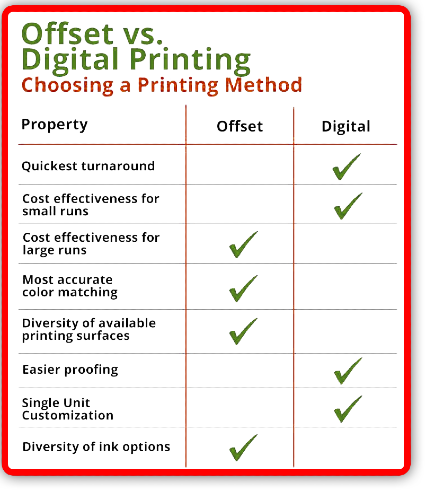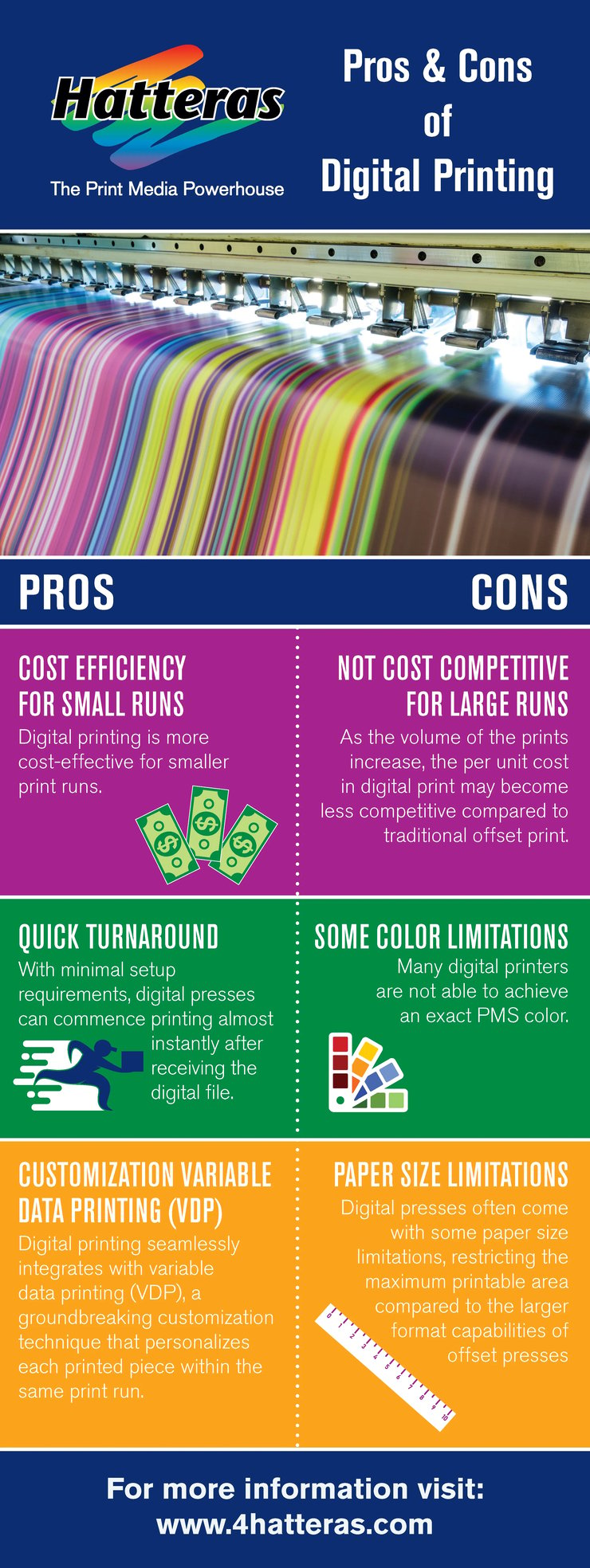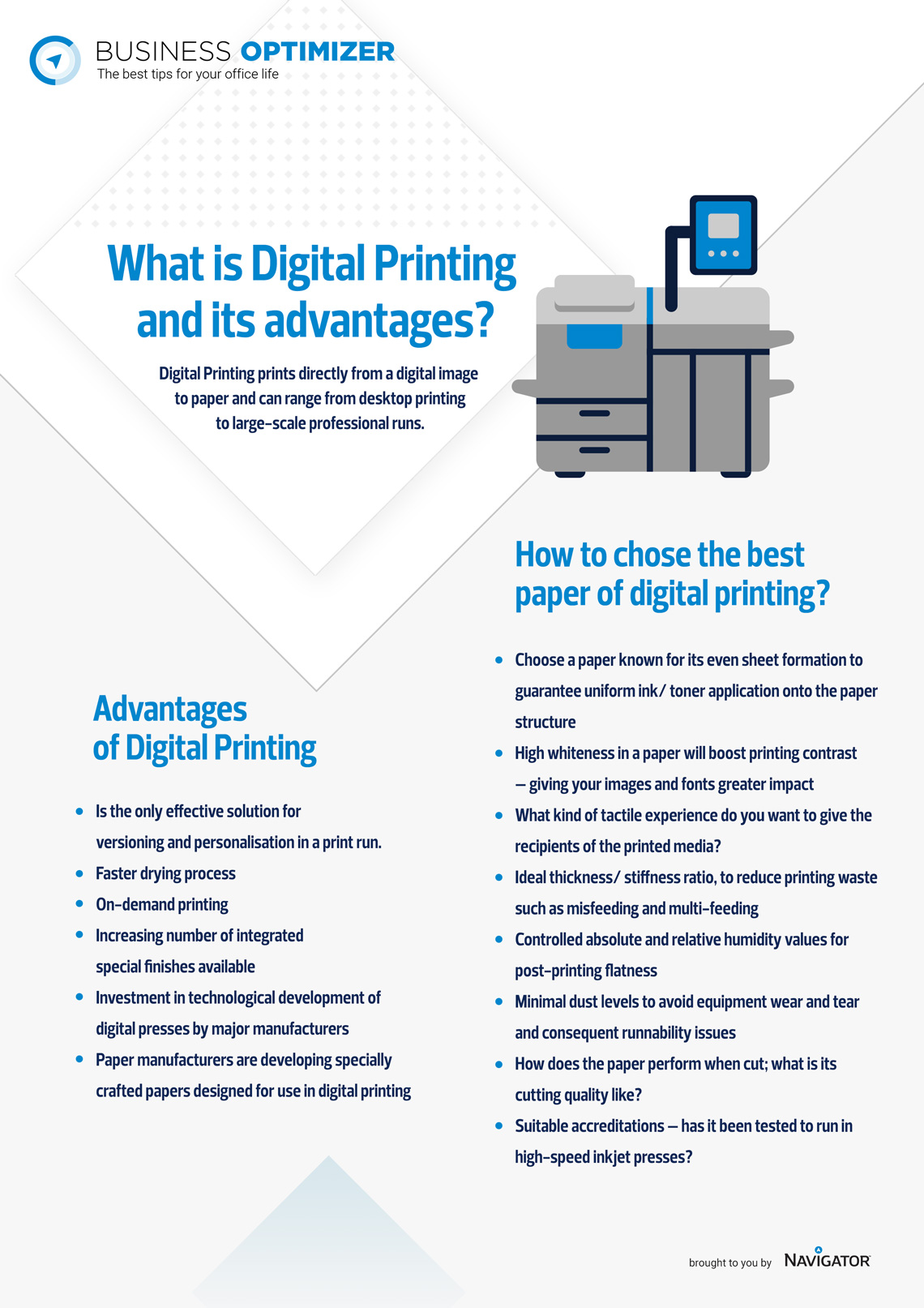Unknown Facts About Digital Printing
Unknown Facts About Digital Printing
Blog Article
The Best Strategy To Use For Digital Printing
Table of Contents4 Simple Techniques For Digital PrintingAn Unbiased View of Digital PrintingExcitement About Digital PrintingAll About Digital PrintingHow Digital Printing can Save You Time, Stress, and Money.Some Ideas on Digital Printing You Should Know
Variable information printing, such as straight mail with individualized codes and addresses, is ideally suited for electronic printing. Digital fast printing just requires four actions of style, review, printing and binding to obtain every little thing done. Digital quick printing has an unrivaled advantage: print on demand.According to PMMI, digital printing enables brand names and makers to respond promptly to consumer needs while boosting the supply chain, reducing warehousing price and waste, and delighting in faster time to market. That all sounds terrific, but just how does this innovation do all that? The significant differentiator of these technologies is that there are no set up charges and no plates with electronic printing.
Getting The Digital Printing To Work
According to Wikipedia, the biggest difference in between electronic printing and conventional techniques such as lithography, flexography, gravure, or letterpress - Digital Printing is that there is no requirement to replace printing plates in electronic printing, whereas in these analog printing methods the plates are continuously changed. This leads to quicker turn-around time and reduces price when utilizing digital printing.
Quick manufacturing means getting your item to market much faster. It likewise means it's much easier and faster to make changes later, when you change a dish, include a SKU, or create seasonal product packaging. Digital printing is very versatile, so it's very easy to make modifications to the package layout promptly. Everything returns to home plates.
With standard printing methods, short-run printing is just not possible. Since a wonderful design can make or break your item, electronic printing continually produces top quality, clear and colorful graphics each time.
Digital printing is the procedure of printing digital-based photos straight onto a variety of media substratums. There is no requirement for a printing plate, unlike with countered printing. Digital data such as PDFs or desktop publishing files can be sent out straight to the digital printing press to print on paper, photo paper, canvas, textile, synthetics, cardstock and other substratums.
Some Known Facts About Digital Printing.
According to PMMI, electronic printing enables brand names and manufacturers to respond rapidly to customer needs while improving the supply chain, lowering warehousing expense and waste, and taking pleasure in faster time to market. That all sounds great, however exactly how does this technology do all that? The significant differentiator of these modern technologies is that there are no set-up costs and no plates with electronic printing.
According to Wikipedia, the best distinction between digital printing and conventional approaches such as lithography, flexography, gravure, or letterpress is that there is no demand to change printing plates in digital printing, whereas in these analog printing approaches the plates are repetitively changed. This results in quicker turnaround time and reduces price when making use of digital printing.

Facts About Digital Printing Revealed
With traditional printing approaches, short-run printing is simply not possible. Since a fantastic style can make or damage your product, electronic printing continually creates high-grade, clear and colorful graphics each time.

According to PMMI, digital printing permits brands and suppliers to respond swiftly to customer needs while improving the supply chain, lowering warehousing expense and waste, and taking pleasure in faster time to market. That all sounds fantastic, but exactly how does this modern technology do all that? The major differentiator of these modern technologies is that there are no set-up charges and no plates with electronic printing.
Not known Facts About Digital Printing
This results in quicker turn-around time and Learn More decreases price when utilizing electronic printing.
Quick manufacturing indicates getting your product to market faster. It also means it's easier and faster to make changes later on, when you transform a dish, include a SKU, or produce seasonal product packaging. Digital printing is extremely versatile, Going Here so it's easy to make modifications to the bundle style swiftly. It all returns to home plates.

Digital Printing for Dummies
Digital printing is the process of printing digital-based pictures straight onto a range of media substratums. There is no requirement for a printing plate, unlike with countered printing. Digital documents such as PDFs or desktop computer publishing data can be sent directly to the electronic printing press to publish on paper, picture paper, canvas, fabric, synthetics, cardstock and other substratums.
Report this page